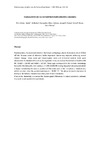Please use this identifier to cite or link to this item:
https://accedacris.ulpgc.es/handle/10553/19910
| DC Field | Value | Language |
|---|---|---|
| dc.contributor.author | Petit-Maire, Nicole | es |
| dc.contributor.author | Delibrias, G. | es |
| dc.contributor.author | Meco, J. | es |
| dc.contributor.author | Pomel, René-Simon | es |
| dc.contributor.author | Rosso, Jean-Claude | es |
| dc.date.accessioned | 2017-01-18T03:30:33Z | - |
| dc.date.accessioned | 2018-06-18T06:45:37Z | - |
| dc.date.available | 2017-01-18T03:30:33Z | - |
| dc.date.available | 2018-06-18T06:45:37Z | - |
| dc.date.issued | 1987 | es |
| dc.identifier.issn | 0168-6208 | es |
| dc.identifier.uri | https://accedacris.ulpgc.es/handle/10553/19910 | - |
| dc.description.abstract | Fuerteventura, the most arid island in the Canary archipelago, due to its location about 100km off the Saharan coast of Morocco, holds important Quaternary deposits indicating recent climatic change. Three levels with Hymenoptera nests and terrestrial mollusk shells were observed in the fixation of the dunes by vegetation: they are radiocarbon dated at 23.600 ± 550 BP, 15.000 ± 200 BP and 9.800 ± 140 BP. | en |
| dc.format | application/pdf | es |
| dc.language | eng | es |
| dc.source | Palaeoecology of Africa and the Surrounding Islands [ISSN 0168-6208], t. 18, p. 351-356 | es |
| dc.subject | 24 Ciencias de la vida | es |
| dc.subject | 2416 Paleontología | es |
| dc.subject | 250205 Paleoclimatología | es |
| dc.title | Paleoclimats de L´ile de Fuerteventura ( Archipel Canarien) | es |
| dc.type | info:eu-repo/semantics/article | es |
| dc.type | Article | es |
| dc.identifier.absysnet | 218751 | es |
| dc.investigacion | Ciencias | es |
| dc.rights.accessrights | info:eu-repo/semantics/openAccess | es |
| dc.type2 | Artículo | es |
| dc.identifier.ulpgc | Sí | es |
| item.grantfulltext | open | - |
| item.fulltext | Con texto completo | - |
| crisitem.author.orcid | 0000-0001-7658-9956 | - |
| crisitem.author.fullName | Meco Cabrera, Joaquín Francisco | - |
| Appears in Collections: | Artículos | |
Page view(s)
95
checked on Jan 25, 2025
Download(s)
46
checked on Jan 25, 2025
Google ScholarTM
Check
Share
Export metadata
Items in accedaCRIS are protected by copyright, with all rights reserved, unless otherwise indicated.
